They participated sparingly during their early days, finishing 14th and last their first time out in 1935 after going 0-6 and being outscored 34-0 before returning in 1939 (improving to 11th out of 13 and scoring their first goals in their 2-1 over Finland) and then not until 1950, the long gap primarily due to the outbreak of World War II which interrupted the World Championships from 1940 through 1946.
In 1950 they placed 8th before four straight appearances in the B Pool from 1951 to 1955. They returned to the international scene next in 1961 and 1963 (now assigned to the C Pool), before finally becoming regular participants in 1967, still in the C Pool.
In 1973, they placed second in the C Pool with a 5-2 record and outscoring their opponents 52-21 while hosting the tournament to earn a promotion to the B Pool, where they stayed for four tournaments prior to a one year demotion to the C Pool. They won the C Pool their first time out in 1978 with a 6-1 mark and a staggering 74-17 goal differential to immediately return to the B Pool Group 2, which they won their first year back up with a 4-0 record, which earned them the right to compete in the Olympic hockey tournament for the only time, the 1980 Games. While in Lake Placid, they posted a record of 1-3-1 thanks to a win over Poland and a tie with Japan.
Canada (in red) vs the Netherlands (white) during the 1980 Olympics
Their B Pool championship in 1979 also gained them entry into the top level of the World Championships for 1981, but they were relegated back to the B Pool after finding the going too tough when they were placed in a group with the Soviet Union, Canada and Finland and lost all three Consolation Round games against the United States, Finland and West Germany.
The Netherlands (in orange) in action against Kazakhstan
Over the next 17 tournaments, the Netherlands competed in the B Pool, with three relegations to the C Pool, where they successfully returned to the B Pool on their first try each time in 1983, 1989 and 1999.
In 2001, they remained in the newly renamed Division I, where they defended their place each time out until the new structure introduced in 2012 saw them placed in the lower half of Division I, still referred to as Division I Group B, but now requiring the Netherlands to rise up through Group A to reach the Top Division for the first time since 1981.
The 2012 Netherlands National Team
For three years they were able to defend their place in Division I Group B, but a sixth place finish in 2015 dropped them to Division II Group A for 2016, where they dominated with 4 regulation wins and an overtime win to earn an immediate promotion back to Division I Group B, which is currently taking place this week in Belfast, Northern Ireland.
Ron Berteling holds the record for the most games played for the national team with 213 while Jack de Heer has scored the most points with 210. Berteling has been awarded the Frans Henrichs Trophy as the MVP of the Dutch League, while de Heer has a trophy named for him which is given to the leading scorer of the Dutch Super Liga.
The Netherlands currently has 3,700 registered senior players and 1,200 junior players and 26 indoor rinks.
The Dutch enjoying their Group G Olympic Pre-Qualification
tournament victory in 2012
Today's featured jersey is a 1992 Netherlands National Team Frank Janssen jersey. Despite their national flag being red, white and blue, the Netherlands traditionally wears orange in international competition, as it is the color of the Dutch royal family.
This attractive jersey was made by the Tackla company of Finland from 1989 to 1993 in a pair of distinct variations, with the earlier ones read "Holland" while the later ones were changed to "Nederland".
Janssen, a right wing, had a long career, spent almost entirely with the Nijmegen Tigers in the Dutch Eredivisie, the top hockey league in the Netherlands, playing from 1983-84 to 2001-02. He has since made sporadic appearances with Nijemegen Devils in 2010-11 (4 games), 2011-12 (6) and 2012-13 (5) while an assistant coach for the club took the place of the Tigers in 2007.
He played for the national team on nine times, seven in the World Championships B Pool, once in the C Pool, and again in an Olympic qualification tournament in 2000 with his finest tournament being the 1992 World Championships when he scored 3 goals and 6 points in 7 games.
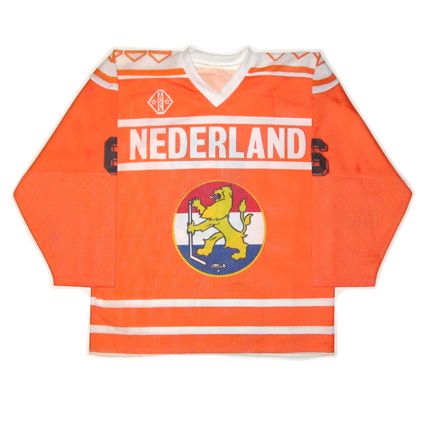
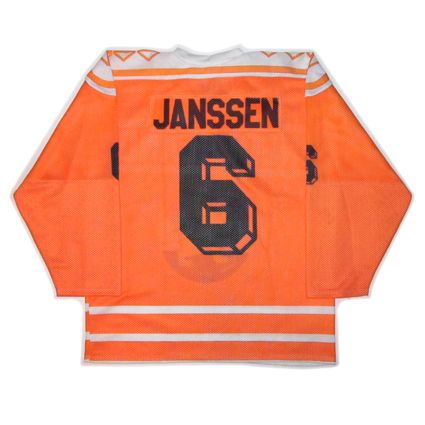
Bonus jersey: Today's bonus jersey is a 1995 Netherlands National Team jersey. This jersey was also made by the Tackla company of Finland, only with Reebok branding on the shoulders in 1994 and 1995 until a different manufacturer took over in 1996.
Extra bonus jersey: Today's extra bonus jersey is a 2008 Netherlands National Team Ivy van den Huevel jersey as worn in the 2008 IIHF Division I Group A World Championships in Innsbruck, Austria as well as the IIHF Group C Pre-Olympic Qualification Tournament in Narva, Estonia in November 2008.
The main crest, striping, name, numbers and even the IIHF logo on the back are all dye-sublimated, with the name on a nameplate which was then sewn on, while the sponsorship patch on the back is printed on a patch which was then sewn onto the jersey. The pair of sponsorship patches on the arms are embroidered patches which were then sewn on.
This very attractive jersey in the traditional Dutch color of orange features a striking main logo and some basic, yet effective striping and contrasting blue accent colors for an overall excellent look.
First up in the video section today, classic footage of the Netherlands versus Canada in the 1980 Olympics. The Netherlands are not wearing their expected orange color, but white jerseys with blue trim.
More classic footage, including a brief interviews with record holding national team players Berteling and de Heer from 1983, as the Netherlands takes on Hungary.
From the recent 2010 Division 1 Group A World Championships in Tilburg, the host Dutch take on Japan.

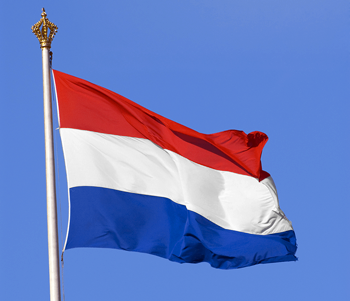


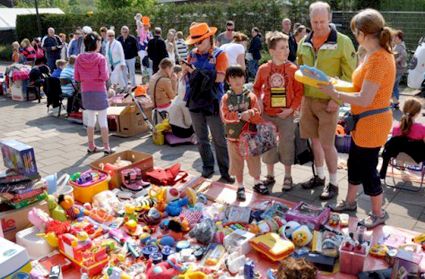
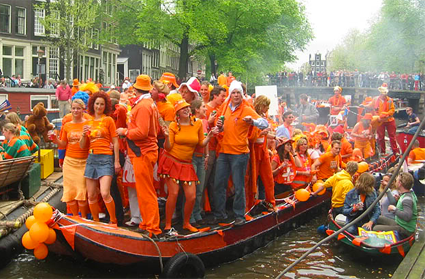

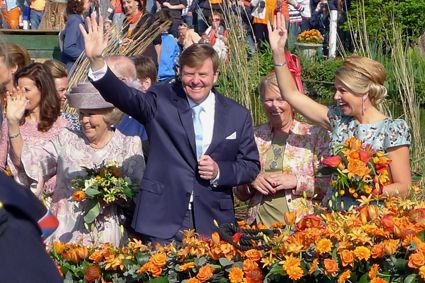


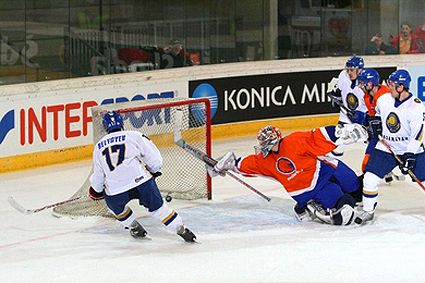
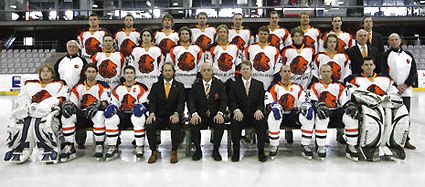
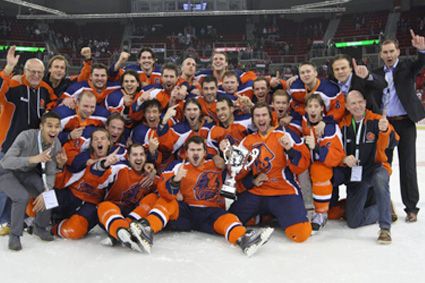


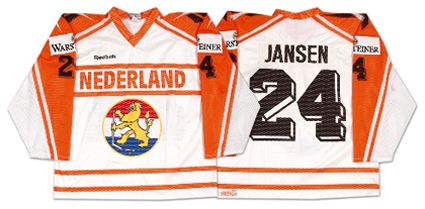
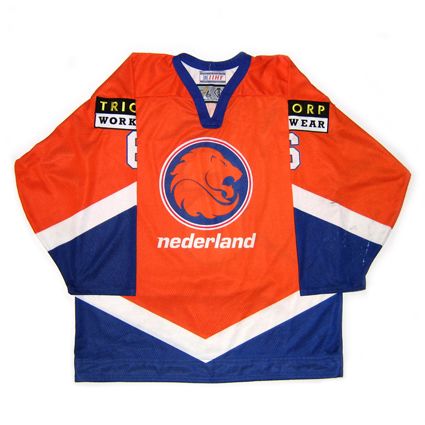
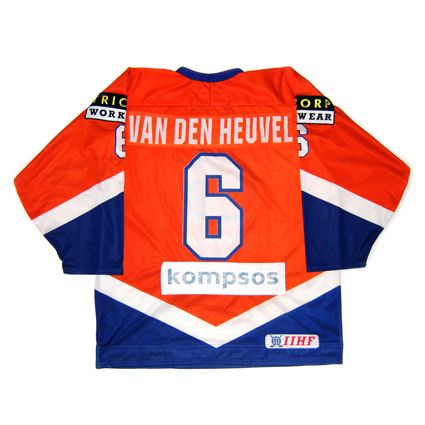










No comments:
Post a Comment
We welcome and encourage genuine comments and corrections from our readers. Please no spam. It will not be approved and never seen.